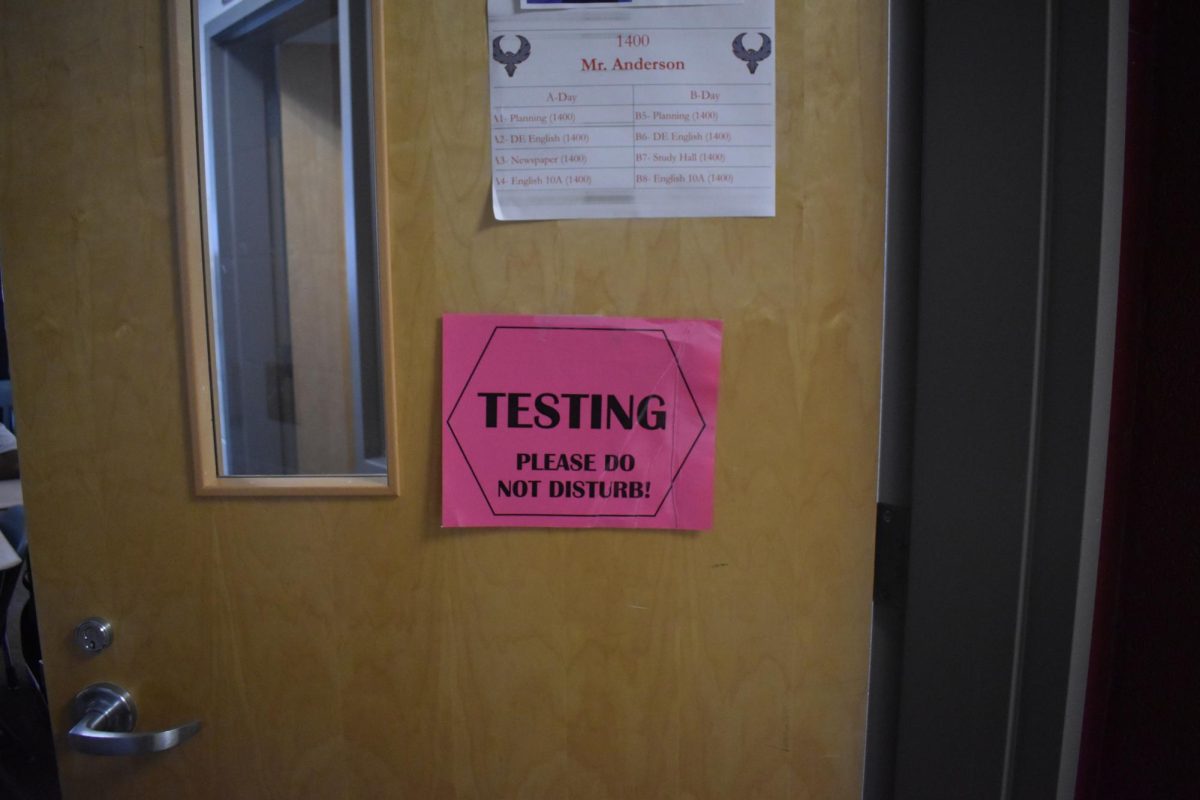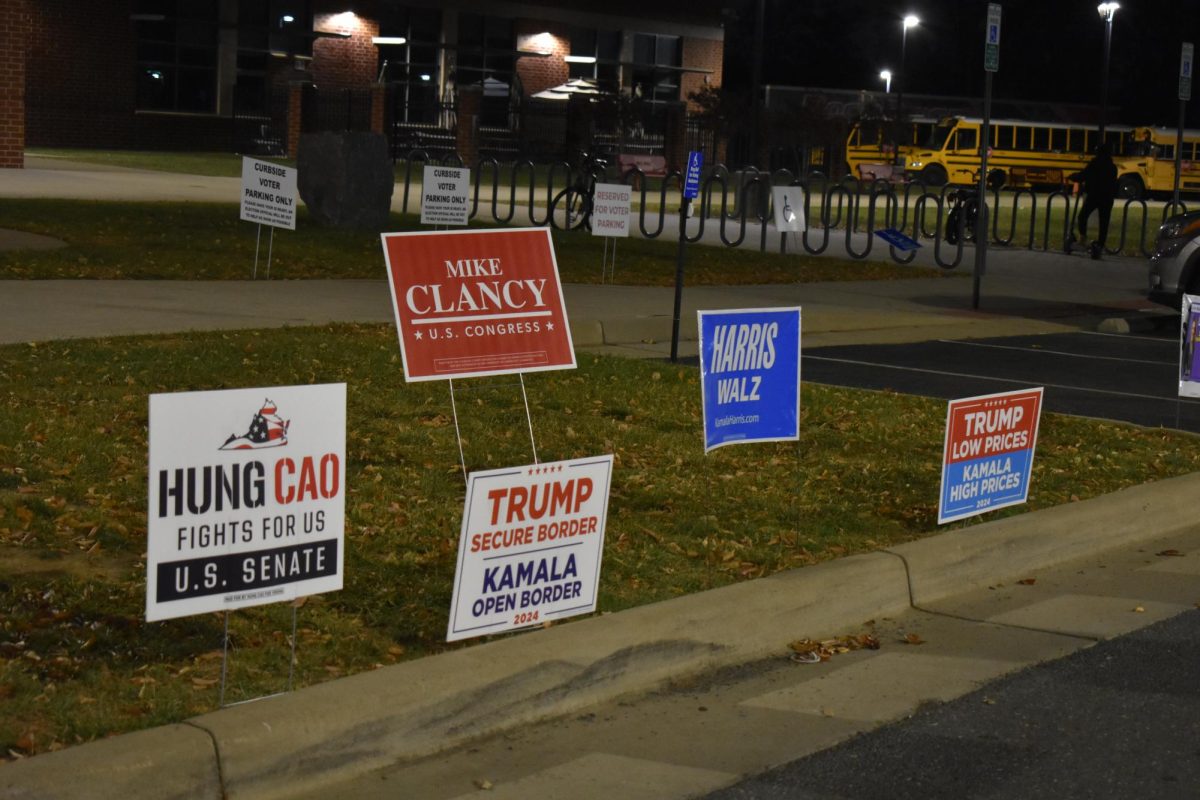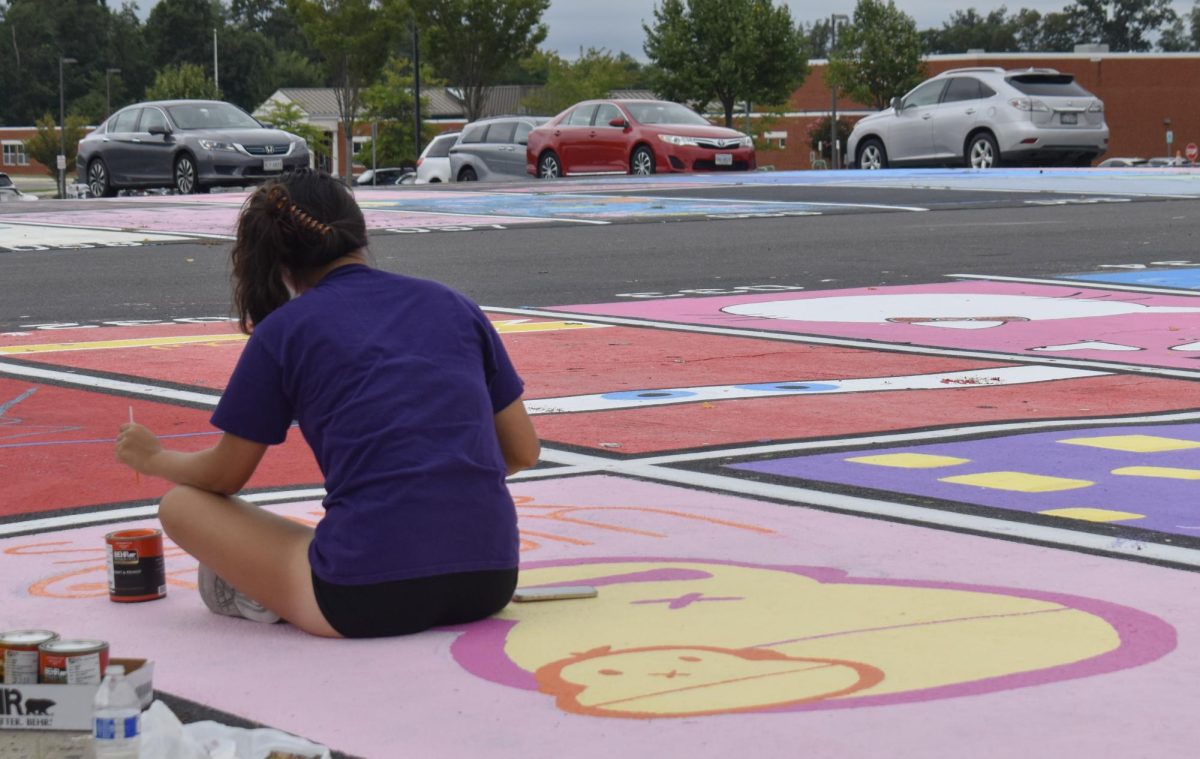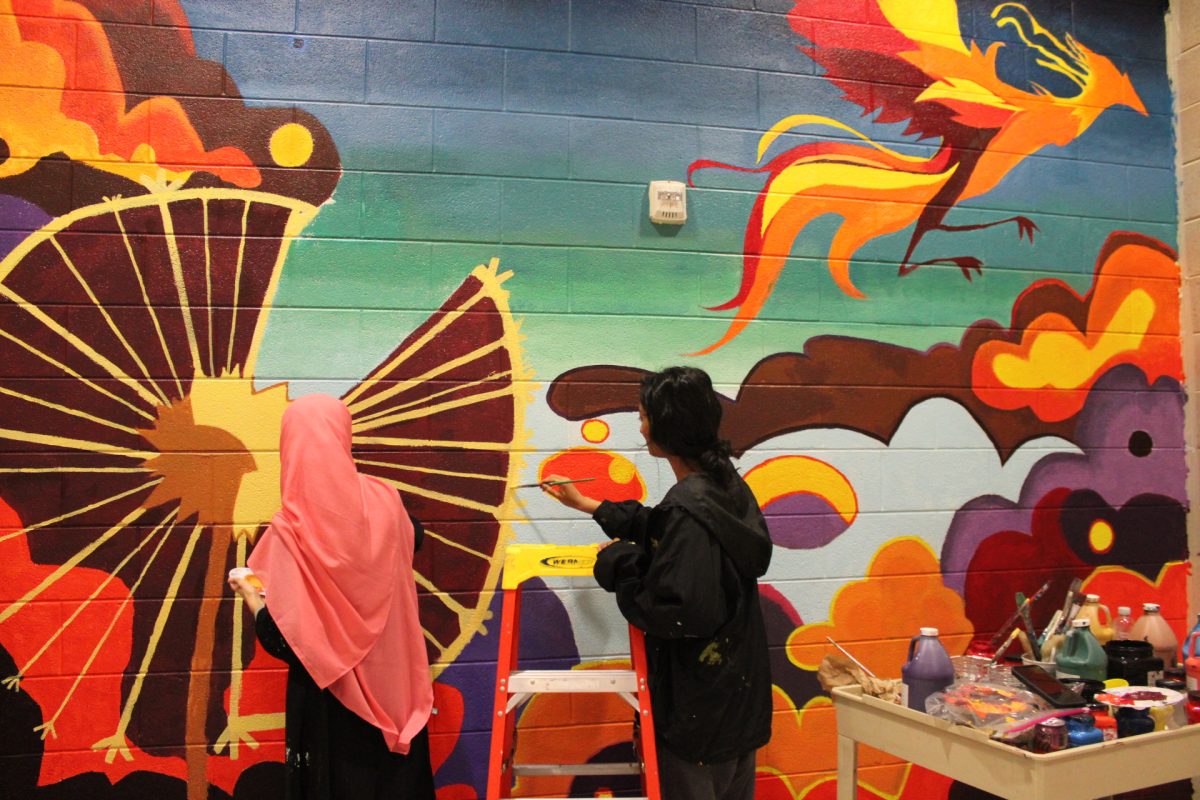Tuesday, Nov. 5, marked the 59th presidential election, and voters nationwide turned out to make their voices heard on this historic day. Virginia’s 10th congressional district had three key national positions up for election: president, senator, and representative.
In the race for the House of Representatives seat formerly held by Democrat Jennifer Wexton, who stepped down following her Parkinson’s diagnosis, the Republican Party nominated Mike Clancy while the Democratic Party put forward Suhas Subramanyam, a former Virginia General Assembly senator. Subramanyam won the seat with a 52% majority. A pre-election prediction from The Hill had Subramanyam at a 96% chance of winning prior to the election.
Subramanyam’s seat in the Virginia General Assembly is in the process of being replaced in a special election. The primary, which was held on Saturday, Nov. 16, put Republican Tumay Harding and Democrat Kannan Srinivasan against each other. The special election will take place on Jan. 7, 2025.
Adela Booth, mother-in-law of Representative-Elect Subramanyam, traveled from Connecticut to help campaign for her son-in-law with a strong message for the new generation of voters. “Vote,” Booth said. “Get involved in politics. Even [if] you don’t think it applies to you, it applies to you. You will carry this debt. It will affect your grandchildren and you have to do something about it. You can’t sit back and watch anymore.”
In Virginia’s Senate race, Democratic incumbent Tim Kaine and Republican challenger Hung Cao faced off. Kaine took the position with a 54% majority. He previously served as a lieutenant governor and governor of Virginia before running with Hillary Clinton in her 2016 presidential campaign. The Hill put Kaine at a 90% chance of winning over Cao before the election.
The race for 270 pitted current Vice President Kamala Harris and former President Donald Trump against each other. This presidential election was historical for an array of reasons. If Harris had won, she would have been the first female president and the first person of South Asian descent to take the White House. Trump is now the first president with a felony conviction — though many speculate his other criminal cases will be dropped or delayed — and is the second U.S. president to serve non-consecutive terms.
News outlets worldwide tracked the results live and reported their predictions, calling certain states as votes came in. For likely states, or states that have their electoral votes consistently going to the same party, calling the race was easy. For states that were deemed purple, projections were more complicated. So on Nov. 5, all eyes were trained on seven battleground states, which were key to winning the presidential election. These battleground states, or swing states, rotate between going blue and red in a cyclic pattern. Michigan, Arizona, Pennsylvania, Nevada, Wisconsin, Georgia, and North Carolina were under careful watch in the weeks leading up to the election, and both candidates held large rallies to win over voters in these states.
The two “groupings” of swing states this year were the Blue Wall states (Michigan, Pennsylvania, and Wisconsin) and the Sun Belt states (Nevada, North Carolina, Arizona, and Georgia). The first state to go red was North Carolina on Tuesday night. Senior officials on Harris’s team saw this state slipping in the weeks leading up to the election, partly due to dissatisfaction following the Biden-Harris administration’s handling of the aftermath of Hurricane Helene.
The Blue Wall states were a shock for many political scientists. These states, and others that are not swing states, are named for normally leaning Democratic. However, in 2016, Trump crumbled the wall in his first run. In 2020, they swung blue with President Joe Biden taking them. This year, Trump once again took all three states. While not all the states have been officially called, it is predicted that Trump will take all seven. These states were pivotal to any win and will consistently be a focal point for future candidates.
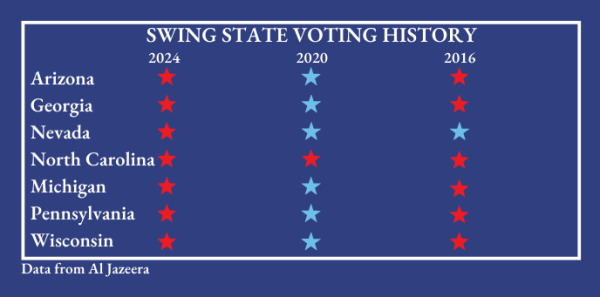
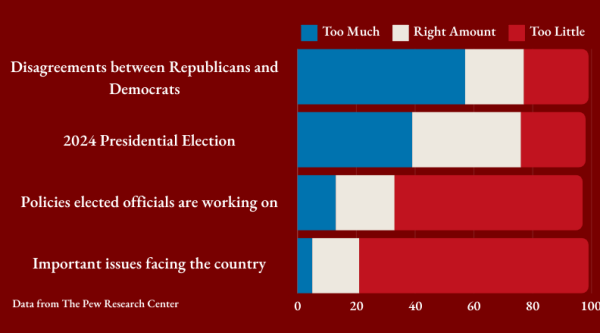
This year marked the first presidential election that the majority of Gen-Z was able to vote. The current political climate is filled with instability and faces a division higher than ever before. The shift came on par with the concept of cancel culture which has made many people afraid to voice opinions. On the political level, polarization in Washington has led to extreme gridlock and slowed cross-aisle collaboration. This means that key bills addressing infrastructure, healthcare, economics, and more don’t make it out of committee or the floor. On a citizen-to-citizen level, the divide causes a rift between family, friends, and neighbors. This start of the “us vs. them” mentality has been a problem some politicians have used as fuel to add to the fire that their campaign hopes to fix.
“I don’t think we need to hate each other,” senior Emilia Scovel said. “We need Republicans and Democrats to bring in new ideas and to represent both ends of the spectrum. I want to stay in a country where everyone is represented, whether it’s an old white man or a young immigrant.”
Rock Ridge students hope to be able to celebrate unity, but they aren’t the only ones. In front of polling locations, each major party will send volunteers as a last-ditch effort to secure more votes. But, instead of spending the day hating each other, they hope to find some common ground as well. “I have some friends I have differences of opinions with but we are still friends,” poll worker Chad Cowen said. “I have been here talking to [the democratic poll workers] and we were joking around with them. That is what we need to do. We don’t need to be angry or any of that stuff but we need to get along.”
Here’s what to look for in the coming months and years of Trump’s presidency. On Dec. 17, the Electoral College will vote on the state level and on Jan. 6, they will meet in a joint Congressional session to officially cast their ballots. Jan. 20 will mark the start of Trump’s second presidency with the inauguration. From now to January, the current administration and future staff will engage in a peaceful transition of power with Biden and Harris both vowing to assist in the process.
Along his campaign trail, Trump has made a series of “Day One” promises vowing to be a “dictator for a day.” His contempt with Jack Smith, the special prosecutor who indicted him, is first on his laundry list of items. Trump has repeatedly stated that he plans to fire him within “two seconds” of his presidency. Next, he plans to free many of the Jan. 6 rioters who have current cases against them. Additionally, gutting many of the programs and policies that were created or enforced during the Biden administration has been a key selling point for him. This includes the Green New Deal, which was never signed into law, starting mass deportations, banning transgender women from women’s sports, cutting federal funding for specific schools, and much more. On April 20, 2025, the first 100 days of his term will be over. This is a major marker for how a presidential administration will run and a flashforward for the next four years.
In the 10 days that followed his victory, Trump has been busy reaching out to fellow GOP supporters and politicians. His cabinet picks have slowly come into the press and public view ー but many of them have drawn criticism from citizens across the country. Some of the most controversial picks have been Representative Matt Gaetz for Attorney General, former presidential candidate Robert F. Kennedy for the Department of Health and Human Services lead, former Fox News reporter Pete Hegseth for Department of Defense head, and the new proposed Department of Government Efficiency co-leads Elon Musk and Vivek Ramaswamy. News outlets and citizens have spoken out about the nominated picks due to their inexperience in their respective fields and the court cases some have against them.
The outcome of this election is one that split the nation. Many Democrats are in mourning of what could have been and many Republicans are excited to see what the future holds. As the nation processes the election results, citizens are encouraged to stay engaged and continue advocating for their beliefs. “Hopefully, [in the next four years], I am seeing people utilize their power, voices, and actions [to fight for what they believe in],” Scovel said. “I see myself continuing to work with Ms. Phoenix, [a women and gender studies club at Rock Ridge], and working with the women’s summit and women’s rights, using my voice and my social media platform to change the view America has on heavy right or left opinions. I hope people in my generation will do the same.”


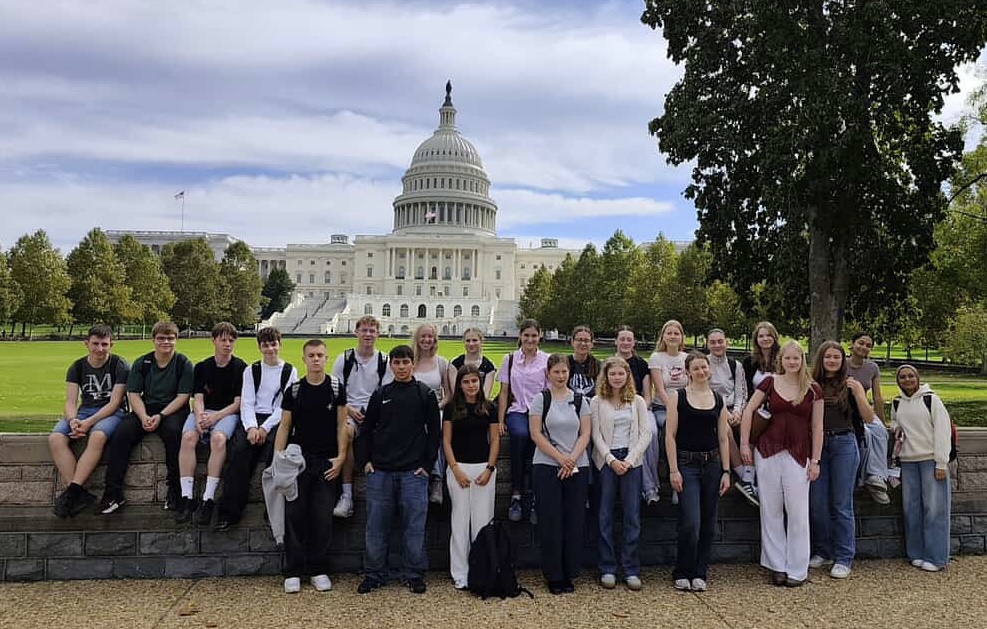
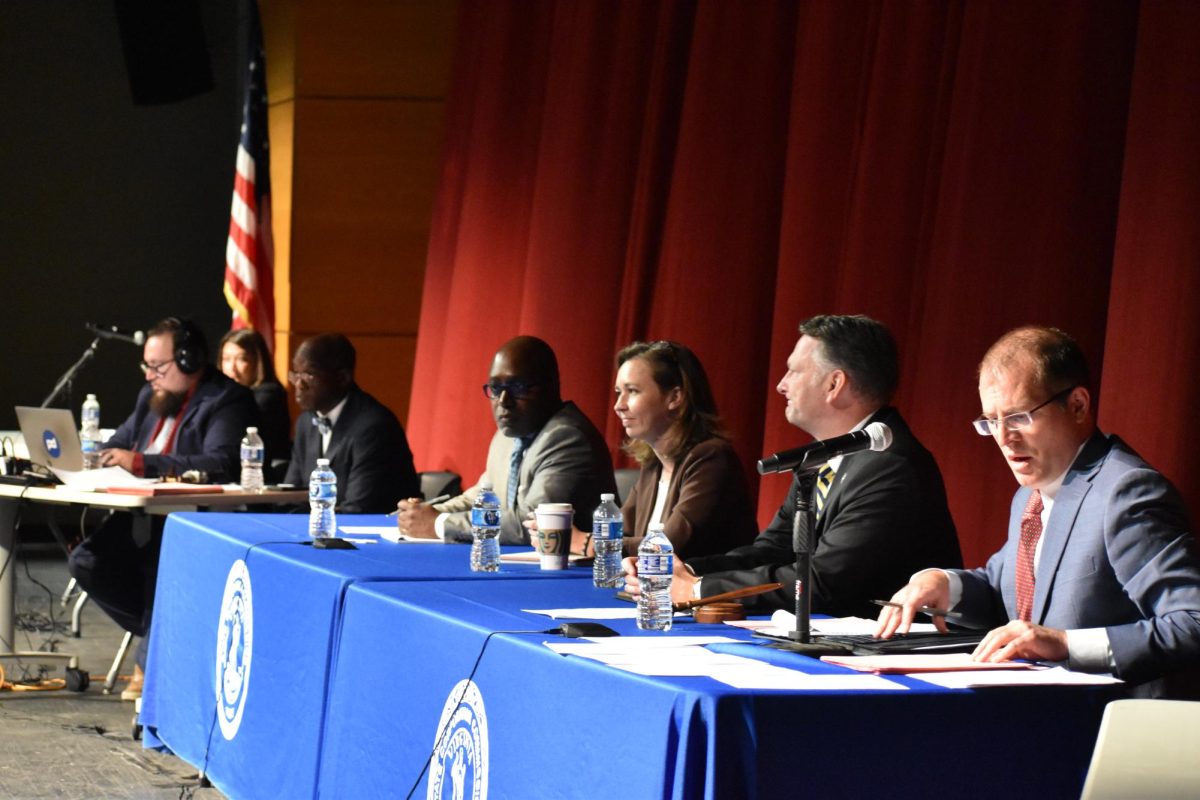



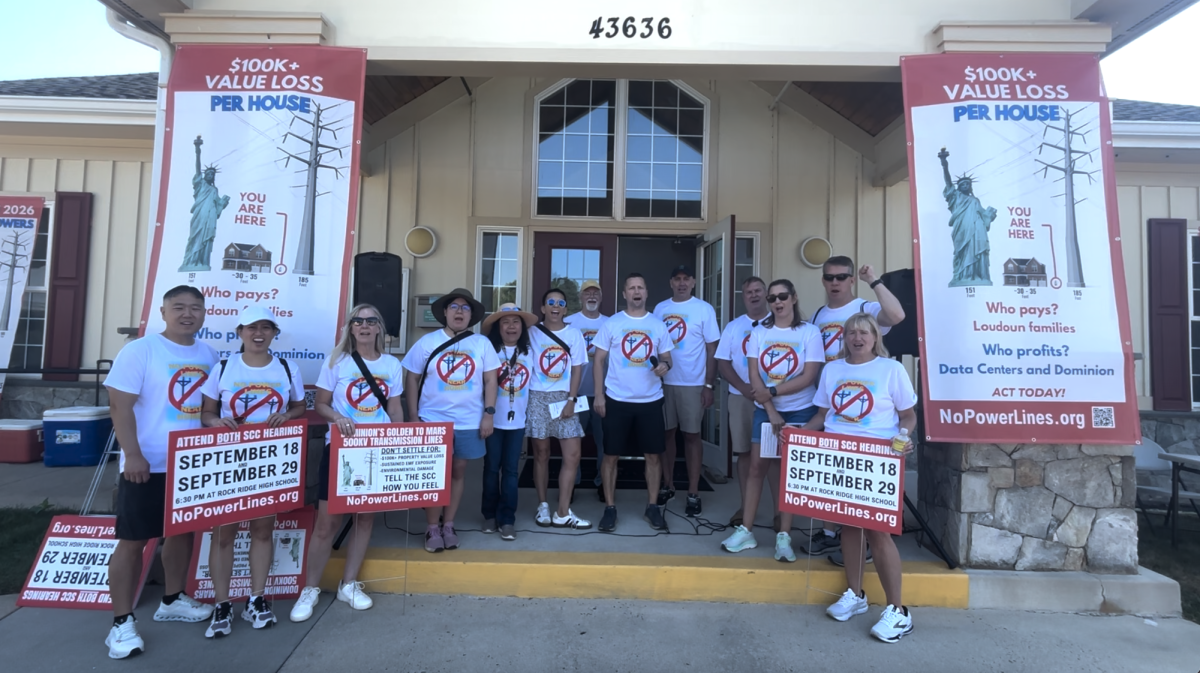


















![The Phoenix varsity volleyball team lines up for the national anthem. “We were more communicative [with each other] during this game, and I feel like we kept our energy up, especially after the first set,” senior Jessica Valdov said.](https://theblazerrhs.com/wp-content/uploads/2024/10/DSC_0202-1200x800.jpg)




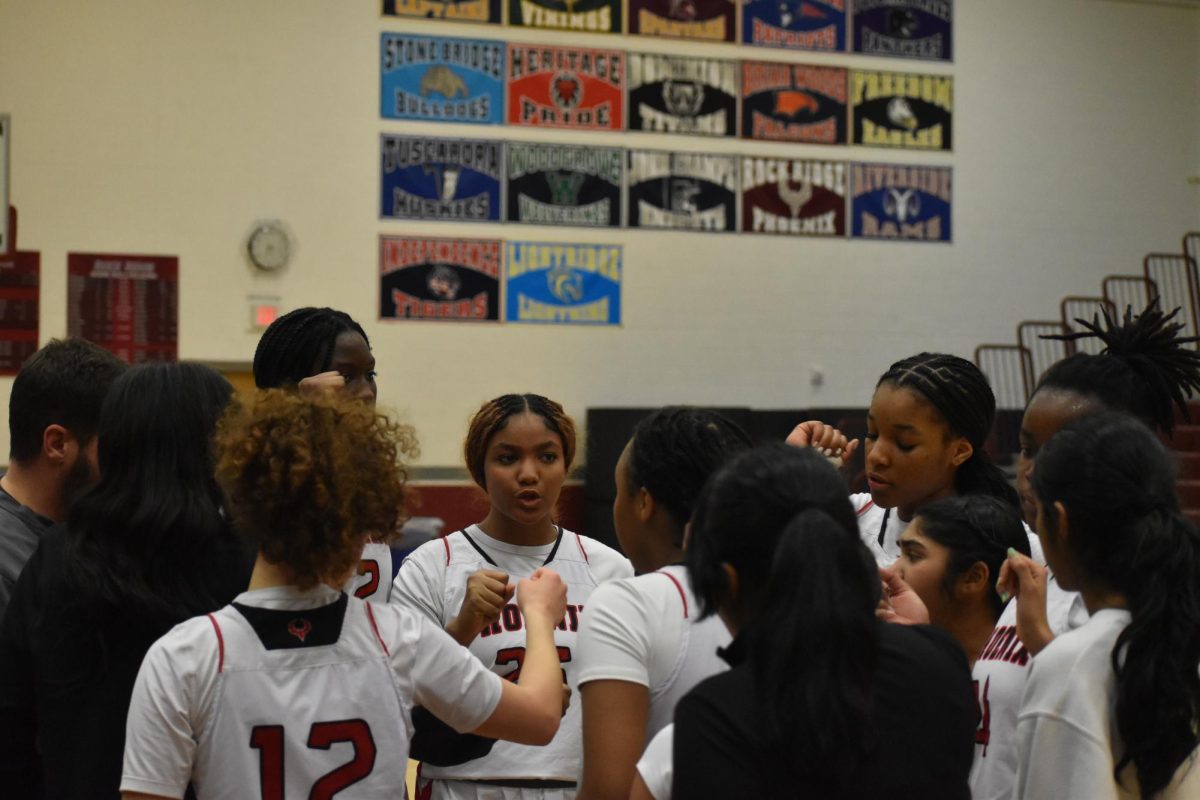





![Junior Alex Alkhal pitches the ball. “[I] just let it go and keep practicing so we can focus on our goal for the next game to get better as a team,” Alkhal said.](https://theblazerrhs.com/wp-content/uploads/2025/05/DSC_0013-1-1200x929.jpg)







